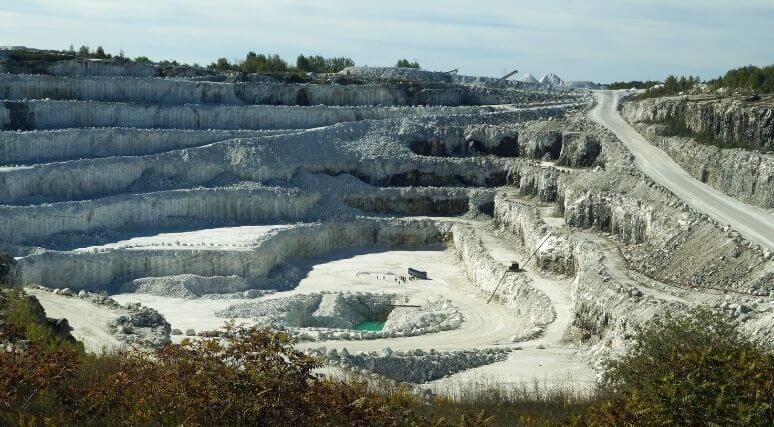This article originally appeared in the Financial Post.
By Heather Exner-Pirot, May 12, 2023
The latest key Canadian and global mining production numbers are out, and they’re grim. The International Energy Agency says that to reach net-zero emissions by 2050, we need to be producing six times the current global output of mineral inputs just to build the turbines, transmission lines, batteries and other items essential for low-carbon energy infrastructure. Instead, we are mining less than we did in 2019. While policy-makers constrain new investments in fossil fuels, the raw materials we need in order to develop alternative forms of energy are not coming along quickly enough. The result seems likely to be an energy crunch.
The 38th edition of the World Mining Data report, published annually by the Austrian government, finds that mining production is not meeting the hopes of governments working to increase their own domestic and friendly sources of minerals. Rather, production has roughly plateaued, with the sector yet to match the peak production of 18 billion metric tons achieved in 2019. Far from growing our outputs, we’re struggling to maintain them.
Even more troubling: more than a third of global mining production remains controlled by our two biggest geopolitical adversaries. China is still responsible for over a quarter of the total and Russia another 9.2 per cent on top of that. China is the world’s largest producer of 29 different commodities and dominates the processing and refining of many others.
In Canada, meantime, we are punching below our weight, ranking only eighth in world production, well behind our peers, the U.S. (second) and Australia (fourth). We do lead the pack in new exploration spending but our actual production of critical minerals is falling, despite renewed attention from the federal government and bilateral agreements with most of our closest allies to increase supply.
Natural Resources Canada released its annual mining production results in mid-April, confirming that in 2022 we produced fewer critical minerals — the copper, cobalt, nickel, zinc, uranium and platinum-group metals that are essential to the energy transition — than in 2019. Output of gold, which is a hedge against inflation and economic uncertainty, did increase, as did output of silver, iron and potash, a key ingredient in fertilizer. But they won’t help us hit our climate goals, and output of metals that would won’t be taking off any time soon, according to the Prospectors and Developers Association of Canada.
Mining investment is anemic around the world, having plummeted 35 per cent between 2021 and 2022, a victim of high interest rates and price volatility. Overall global mining financing is barely a third what it was a decade ago, falling from US$119 billion at the peak of the last commodity cycle in 2013, to a dismal US$42 billion last year. Far from growing mineral production for a future net-zero world, we are living off investments made in the past.
Governments are aware of and concerned with the problem. At the latest G7 climate and energy meeting in Japan, where critical minerals were at the forefront of discussions, Canadian Minister of Environment and Climate Change Steven Guilbeault assured reporters, “We can become a reliable provider of these resources or products for our international allies.” The key word, of course, is “become.” Because the latest data show that, despite what may be the best of intentions, Canada is not yet filling any of the supply gaps the world is suffering in reliable and affordable critical minerals. Just last month, our only rare-earths mine suspended production due to high costs and low commodity prices. High capital costs, supply chain woes, labour shortages and regulatory burdens are not uniquely Canadian problems. But they are still problems.
Recent federal plans, commitments and statements on critical minerals are all welcome. But at the end of the day, it is proposals, approvals, investment and construction that are needed. And those are not coming fast enough.
Heather Exner-Pirot is director of energy, natural resources and environment at the Macdonald-Laurier Institute.






